This article is written by Jatin K. Chheda, pursuing Diploma in Cyber Law, FinTech Regulations, and Technology Contracts from Lawsikho.
Table of Contents
Introduction
Through the course of history, the employer-employee relationship dynamics has seen a transformational change as have societies and civilisations. Historically speaking, the employees were largely at the mercy of their employers, who in case of injury would exercise, at their own discretion based on their will whether or not to or how to in case of injury or death while at work, compensate an employee or their dependents.
With the oncoming of industrial age and implementation of large labour based workforces, there came about a time where employees started working for employers in possibly riskier environments with exposure to sophisticated machinery, technology, toxic chemicals etc., exposing the workmen to riskier environments at the behest of earning profits for the employer.
While earlier the question of compensation arose only in cases of negligence of the employer, with the passage of time, the legal mechanism and machinery provided for wider adoption of scope for compensation to employees.
This paper looks at the aims, objectives and purposes of the Indian law enacted as the Employee Compensation Act, 1923 and the duties of the employer towards the employee.
In 1923, India saw an enactment of the Workmen’s Compensation Act, 1923. With the enforcement of this law, employees were no longer at the mercy of the will of their employer alone, to be compensated for any injury or death arising at the workplace.
The object of the Act is to provide for the payment of compensation by certain employers to their employees for injury caused to them by accident while in employment. If an employee contracts an occupational disease while in employment, it is also treated under the Act as injury caused by accident.
In 2009, vide an amendment of the Act, which enforced on 18th January, 2010, the name of the Act was amended to the Employee’s Compensation Act.
In Works Manager, E. I. Railway v. Mahavir, A.I.R. 1954, Allahabad High Court observed that a person is responsible, when he for his own profit, sets agencies that expose others to risks. When applied to the Employee Compensation Act, 1923, this context is applicable rightly to the employer
Employee relationship, whereby the employer, through his agency or business, sets up a facility which is his own responsibility, whereby an employee works for his employer so that the latter is able to carry out his business and earn profits from the same. The risk that the employee is exposed to in the due course of carrying out the work for the employer, viz. Working on a machine that can cause injury, exposure to work-related diseases or illness, death as an occurrence of the job engaged in, etc., ties down the employer to be responsible to compensate the Employee or the dependents for the damage, injury and loss caused due to the mishaps.
Section 1 of the Act states that the Employee Compensation Act is applicable to the whole of India. While the Act was enacted in 1923, it came into force on the 1st of July, 1924.
However, the provisions of this Act do not apply to the persons covered under the provisions of the Employee’s State Insurance Act. The benefit of this Act was observed in Rengasamy v. Amalraj, 2002, where the court held:
“The Act is a Beneficial piece of Legislation that has been enacted to Compensate the Workmen and their dependent’s in the event of accidents during the course of Employment. It is not to be used to extort money from people with whom there is no nexus of employment. It is unfortunate that a beneficial enactment such as this is misused by some persons.”
Understanding the Employee Compensation Act 1923
The Act exhaustively covers the scope of workplace relationship dynamics of an employer and employee, while taking into its ambit the due measures arising out of situations that require legal remedies, measures and provisions for adequate compensation to employees, in that it spreads cover as social security in the guise of a well-constituted framework of compensation. Section 2 of the Act lays forth various definitions of terms like employer, employee, dependent, wages, partial and total disablement, and many more which are covered within the ambit of the Act.
Since the scope of this Act is largely specific to compensate the employees or to their dependents in case of injury, death, illness as a result of job undertaken, etc. It is essential to have a lucid basis upon which the liability to pay compensation may be formulated. Section 3 of the Act exhaustively and expressly lays down not only the provisions for the principles on which the compensation is payable but also promulgates where the compensation is not payable. The scope of the Act also covers an occupational disease to be deemed as an injury arising out of an accident, and Section 3 of the Act clearly states the provisions for such classification. This section enables the employee to recover compensation from the employer due to injury arising out of an accident, likewise, it also enables the dependents of a deceased employee to recover compensation for his death.
Object and purpose of the Act
To better understand the object and purpose of the Act it is necessary to understand the basic definitions, scope and concept upon which the Act stands. For this, we are going to review some of the important features and definitions promulgated under the Act.
For this, we are going to cover the following essential features as defined under the provisions of the Act:
1. Dependant
The Act proceeds to primarily define dependents. Dependent in this case means those relations of a deceased employee, who were dependent on the employee wholly or partially for sustenance.
These dependents are broadly categorised into three categories, viz. 1) direct dependents, like a widow 2) major dependents like a son or daughter and 3) other dependents like for example parents, who are (wholly or partially) dependent on the employee.
This definition is essential, as in case of death of an employee, at the time it would be essential to understand who is considered and in particular to the case who are the dependants deserving to be compensated on account of the death of the employee.
The above relationship chart illustrates clearly the relations classified as the dependents of a deceased employee. as defined by the Employee Compensation Act, 1923:
As shown above, the following relations of deceased employees are classified as a dependant under Section 2(1)(d) of the Act:
- A widow, a minor or legitimate or adopted son, an unmarried legitimate or adopted daughter, or a widowed mother.
- If wholly dependent on the earnings of the employee at the time of his death- a son or a daughter who has attained the age of 18 years, and who is infirm.
- If wholly or in part dependent on the earnings of the employee at the time of his death
- A widower
- A parent other than a widowed mother.
- A minor illegitimate son, an unmarried illegitimate daughter or a daughter, legitimate or illegitimate or adopted, if married and a minor, or if widowed and a minor.
- A minor brother or unmarried sister, or a widowed sister, if a minor.
- A widowed daughter-in-law.
- A minor child of a predeceased son.
- A minor child of a predeceased daughter, where no parent of the child is alive;
- A paternal grandparent, if no parent of the employee is alive.
2. Employer
According to Section 2(1)(e), an employer includes:
- Any body of persons, whether incorporated or not.
- Any managing agent of an employer.
- The legal representative of a deceased employer.
- When the services of an employee are temporarily lent or let out to another person by the compensation with whom the employee has entered into a contract of service or apprenticeship, i.e. such other person while the employee is working for him.
It is essential to define the ‘employer’ as it is the employer who is liable to pay the compensation as per the Act, nobody other than the someone who satisfies the definition of the employer as per the definition laid down in the Act of one who is made expressly liable to pay compensation shall be responsible to pay the compensation.
3. Employee
The chart is illustrative of the definition of employee as per Section(1)(dd) of the Act. However, the Schedule II of the Act exhaustively defines further those defined as employees under the Act. The definition of employee is far wider than the employer under the Act. The central and state governments have been empowered to add to Schedule II, any class of personnel employed in any occupation, which satisfies the government to be classified as a hazardous occupation. The injuries that fall under such provisions can be expressly defined with limitations. It is important to note that as stated the definition of the term employee is exhaustive as it covers what the definition includes as well as does not include in the definition of an employee.
4. Wages
Section 2(1)(m) defines wages as including any privilege or benefit which is capable of being estimated in money. The definition of wages is important as the amount of compensation lays its entire base on the amount of wages of the employee.
5. Disablement: Partial and total
The Act doesn’t expressly define disablement. It only defines partial and total disablement. These definitions elicit the idea that disablement under the ambit of the Act is the loss of capacity to earn and depending on the nature of injury and percentage of loss of earning capacity, can be expressly defined as partial or total.
6. Compensation
The amount paid by the employer, liable to compensate the employee for loss of earning capacity or incapacitated by the disablement arising out of injury or accident or occupational illness, etc. Or the amount to the dependents of a deceased employee that the employee is liable to pay as defined by Section 2(1)(c) of the Employee Compensation Act, 1923.
Now that the context of the Employee Compensation Act, 1923, is clear with the illustration of the important definitions under the Act. It is now important to understand how the Act relates employer and employee in terms of liabilities and compensation, which will also in turn expressly lay out the main aims and objectives upon which this enactment was brought about.
Liability
Section 3 provides the basis of liability, under three heads:
1. Employer’s liability
When an employee, in the course of his employment incurs a personal injury by an accident arisen while in course of such employment, is bound to compensate by his employer who is liable to offer such compensation to such employee. These compensations should be in accordance with provisions of Sections 3 to 18A of the Act.
However, the employer is not liable to compensate the employee in cases as under:
These defences, however, are not available to the employer in case of the death of the workman, in which case, even though the employee was negligent, the employer is liable to pay full compensation to the dependants of the workman, whose death arose out of and in the course of his employment.
The case related to employer’s liability in case of workman’s death is illustrated as under:
There is sufficient judicial precedent for the liability of the employer for compensation due to death in the course of his employment. To bolster the above two scenarios following was held by the courts in various cases:
1) In the case of the Regional Director, E.S.I. Corporation & Anr. v Francis De Costa & Anr. a Three-Judge Bench of the court held as under; “In the case of Dover Navigation Company Limited v. Isabella Craig 1940 A.C. 190, it was observed by Lord Wright that nothing could be simpler than the words “arising out of and in the course of the employment.” It is clear that there are two conditions to be fulfilled. What arises “in the course of the employment is to be distinguished from what arises “out of the employment.” The former words relate to time conditioned by reference to the man’s service, the latter to causality. Not every accident which occurs to a man during the time when he is on his employment, that is directly or indirectly engaged on what he is employed to do, gives a claim to compensation unless it also arises out of the employment. Hence the section imports a distinction which it does not define. The language is simple and unqualified.
2) It has been held by various High Courts that mere negligence does not disentitle a workman to compensation. Lord Atkin in the case of Harris v. Associated Portland Cement Manufacturers Ltd. observed as under; “Once you have found the work which he is seeking to be within his employment the question of negligence, great or small, is irrelevant and no amount of negligence in doing an employment job can change the workman’s action into a non-employment job … In my opinion, if a workman is doing an act which is within the scope of his employment in a way which is negligent in any degree and is injured by a risk incurred only by that way of doing it he is entitled to compensation.”
On analysis of the above provisions, it is apparent that the employer is liable to pay compensation when:
- There is a personal injury caused to the workman;
- Such jury is caused by an accident;
- The accident has arisen out of and in the course of, his employment.
2. Occupational diseases
Since injuries arising out of accidents are liable to be compensated, it was considered necessary to specify that occupational diseases are to be regarded as injuries arising out of accidents.
An occupational disease is one that arises out of the occupation or employment and is peculiar to that employment. There arises a need to protect the workmen from the risk of contracting such occupational diseases, therefore it is necessary that employers be made liable to compensate for adequate safety of workmen.
For example, there are certain occupations that expose employees to particular diseases that are inherent;
- Infra-red radiations;
- Skin diseases due to chemical or leather processing units;
- Hearing impairment caused by noise;
- Lung cancer is caused by asbestos dust and diseases due to the effect of extreme climatic conditions.
Example- Sometimes miners develop lung diseases due to exposure to dust. The people who work in agricultural lands, develop diseases through the spraying of pesticides. These pesticides are toxic in nature and are health hazards to many farmers.
Provided that the employer shall not be liable:
(a) if any injury does not result in the total or partial disablement of the employee for a period exceeding three days;
(b) if any injury does not result in death or permanent total disablement caused by an accident which is directly attributable to;
- If the employee is under the influence of drink or drugs at that time,
- The willful disobedience of the employee to an order expressly given, or to a rule expressly framed, for the purpose of securing the safety of employees,
- The wilful removal by the employee of any safety guard or other devices which he knew to have been provided for the purpose of securing the safety of employees.
Part A of Schedule III
If an employee contracts any disease that is mentioned in occupational diseases or the employee is employed for a continuous period of six months (this does not include the service period) and not less than that, the employer shall not be liable to pay the compensation as the disease will be deemed to be injury and it shall be considered as out of the course of employment.
Part B of Schedule III
- Diseases caused by phosphorus or the toxic substance present, all include exposure to risk concerned.
- Diseases caused by mercury or toxic substances found exposure to the risk concerned.
- Diseases caused by benzene or the toxic substances found which pose risk to the concerned.
- Diseases caused by nitro and amino toxic substances of benzene involve risk to the concerned.
These diseases are considered occupational diseases, and they are deemed to be out of the course of employment and therefore the employer will not be liable to pay the compensation.
Part C of Schedule III
If an employee contracts a disease that is mentioned as an occupational disease that is specific to that employment, during a continuous period that is less than the period mentioned under this part of Schedule 3 is known as an occupational disease. It will be deemed that the disease has arisen out of and in the course of the employment, the contracting of such disease will be deemed to be an injury by accident within the meaning of this Section:
- Section 3(3)
The Central Government or the State Government gives a notification in the Official Gazette which species the diseases will be deemed to be occupational diseases under the provisions of sub-section(2) and in the case of notification by the state government, these diseases are declared by the Act.
2. Section 3(4)
No compensation will be payable to an employee unless the disease is directly attributable to a specific injury that arises out of or in the course of employment.
3. Bar to claim
Under Section 3(5), a claim for compensation under the Act is barred in lieu of a prior civil suit for damages on account of the injury. Section 3 revokes the right of compensation to a workman in respect of any injury if he has instituted a suit in Civil Court for damages of the injury against the employer or any other person.
The provision for the bar is made against the possibility of double recovery, thus a workman cannot twice claim compensation for the same injury.
Compensation
Section 4 of the Act deals with the amount of compensation. The provisions related to the quantum of compensation can be divided into 4 contingencies as under:
The amount of compensation varies in each case, as demonstrated by the chart below:
The above provisions are subject to two conditions:
- From the lump sum or half-monthly payments, one must deduct the amount of any payment of allowance which the employee has received from the employer by way of compensation other than payment for medical treatment, during the period of disablement prior to receipt of such lump sum or do the first half-monthly payment.
- No half-monthly payment can, in any case, exceed the amount, if any, by which half the amount of the monthly wages of the employee before the accident exceeds half the amount of such wages which he is earning after the accident.
- Cessation of disablement: In case disablement ceases before the half monthly payment is due, payment shall be made proportional to the number of days in the half-monthly cycle.
- Funeral expenses: In case of death due to injury, the employer must, apart from the compensation pay Rs. 5000 to the eldest surviving dependant of the deceased, as funeral expenses.
- Reimbursement of Medical Expenses: By the amendment of 2009 provision is made for the employee to get full reimbursement of the actual medical expenses incurred by him for the treatment of injuries caused to him during the course of his employment.
- Provisions of the Act, not sympathy or generosity will be the determining factor: In Oriental Insurance Co. v. Mohammed, 2002, the Kerala Court held that the provisions of Section 4 will determine the compensation in case of injuries falling in Schedule I. The courts cannot act ignore the statutory mandate and act as benevolent kings; generosity and sympathy cannot be exercised at the expense of others.
Penalty for default
To ensure quick payment of compensation, there are provisions made in Section 4A that ensure compensation should be paid as soon as it is due.
Compensation to be paid when due and penalty for default;
- Compensation under Section 4 shall be paid as soon as it falls due.
- In cases where the employer does not accept the liability for compensation to the extent claimed, he shall be bound to make provisional payment based on the extent of liability which he accepts, and, such payment shall be deposited with the Commissioner or made to the workman, as the case may be, without prejudice to the right of the workman to make any further claim.
- Where any employer is in default in paying the compensation due under this Act within one month from the date it fell due, the Commissioner shall;
- Direct that the employer shall, in addition to the amount of the arrears, pay simple interest thereon at the rate of twelve per cent per annum or at such higher rate not exceeding the maximum of the lending rates of any scheduled bank as may be specified by the central government, by notification in the Official Gazette, on the amount due; and
- If, in his opinion, there is no justification for the delay, direct that the employer shall, in addition to the amount of the arrears, and interest thereon pays a further sum not exceeding fifty per cent of such amount by way of penalty:
Provided that an order for the payment of penalty shall not be passed under clause (b) without giving a reasonable opportunity to the employer to show cause why it should not be passed.
Explanation: For the purposes of this subsection, “scheduled bank” means a bank for the time being included in the Second Schedule to the Reserve Bank of India Act, 1934 (2 of 1934). The interest and the penalty payable under sub-section (3) shall be paid to the workman or his dependant, as the case may be.
Ancillary duties of an employer
- To pay compensation for an accident suffered by an employee, in accordance with the Act.
- To submit a statement to the Commissioner (within 30 days of receiving the notice) in the prescribed form, giving the circumstances attending the death of a workman as a result of an accident and indicating whether he is liable to deposit any compensation for the same.
- To submit an accident report to the Commissioner in the prescribed form within 7 days of the accident, which results in the death of a workman or a serious bodily injury to a workman.
- To maintain a notice book in the prescribed format. A place where it is readily accessible to the workman.
- To submit an annual return of accidents specifying the number of injuries for which compensation has been paid during the year, the amount of such compensation and other prescribed particulars.
Conclusion
The Employee’s Compensation Act, 1923, formerly known as the Workmen’s Compensation Act, 1923 lays down laws and statutes, as an ad-hoc measure of providing social security to the employees/workmen in case of injury, accident or occupational illness arising in the course of their employment. The Act also covers the dependents of a deceased employee in case of death in the course of employment. The Employee’s Compensation Act, 1923, is applicable in all of India and provides for Compensation with regards to mishaps and the resulting loss of earning capacity arising out of these mishaps to the employee. While in olden days, the employees were solely at the mercy of their employers or master, who exercised their will at their own whims to exercise discretion in terms of compensation to the aggrieved. The Employee’s Compensation Act transcends such ambiguity and uncertainty towards the workmen and provides all-encompassing statutes which expressly define the inclusions and exclusions, parties, compensation, types of injuries and disablement, accident, death, etc. Today, the Act grants a statutory right to the workers to recover compensation for injuries caused by accidents arising out of, and in the course of, their employment. The express object of the Act is to provide for payment by certain classes of employers, to their employees, of compensation for injury by accidents, and to compensate the dependents of the deceased workmen. The Act however doesn’t cover in its scope those employees covered under the Employee State Insurance Act. Subsequently, the Act also says exclusions through various measures, to cover the employer from double recovery, or in case of a civil suit seeking damages, the Act also defines expressly who cannot claim for compensation as a result of their own regressive actions.
It seems that the Act is a recognition of the fact of a mechanised Industrial Age, where the worker can no longer be looked upon as a mere cog in the industrial machinery. The statement of objects and reasons of the Employee Compensation Act, 1923 elicits such aspects as:
“The growing complexity of the industry, with the increasing use of machinery and consequent danger to the employee, along with the comparative poverty of the employee themselves, renders it advisable that they should be protected, as far as possible, from hardships arising out of accidents. This Act provides for cheaper and quicker disposal of Disputes relating to compensation through Special tribunals than was possible under the Civil Law.”
Thus the Act provides for the payment of compensation proportional with the risk an employee undertakes and it would only be fair to say that the object of the Act is to provide social security and to ensure social justice, and it certainly is not to punish the employer, it is thereby not punitive in nature, it only seeks to provide justice for the employee.
Students of Lawsikho courses regularly produce writing assignments and work on practical exercises as a part of their coursework and develop themselves in real-life practical skills.
LawSikho has created a telegram group for exchanging legal knowledge, referrals, and various opportunities. You can click on this link and join:
 Serato DJ Crack 2025Serato DJ PRO Crack
Serato DJ Crack 2025Serato DJ PRO Crack





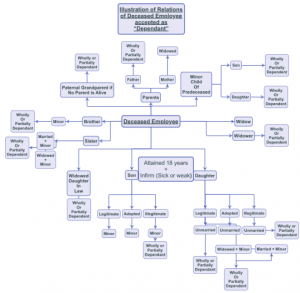
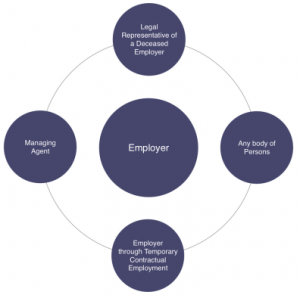
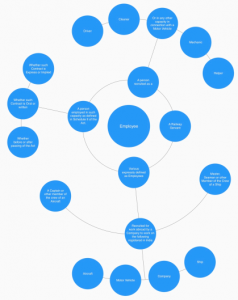
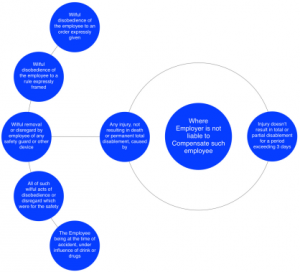

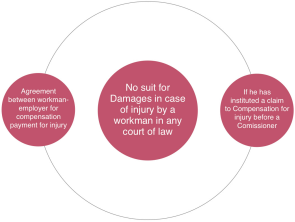
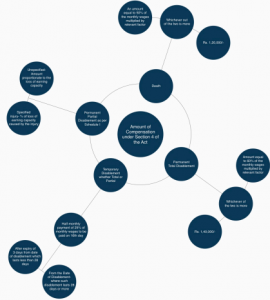





 Allow notifications
Allow notifications



